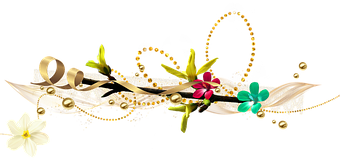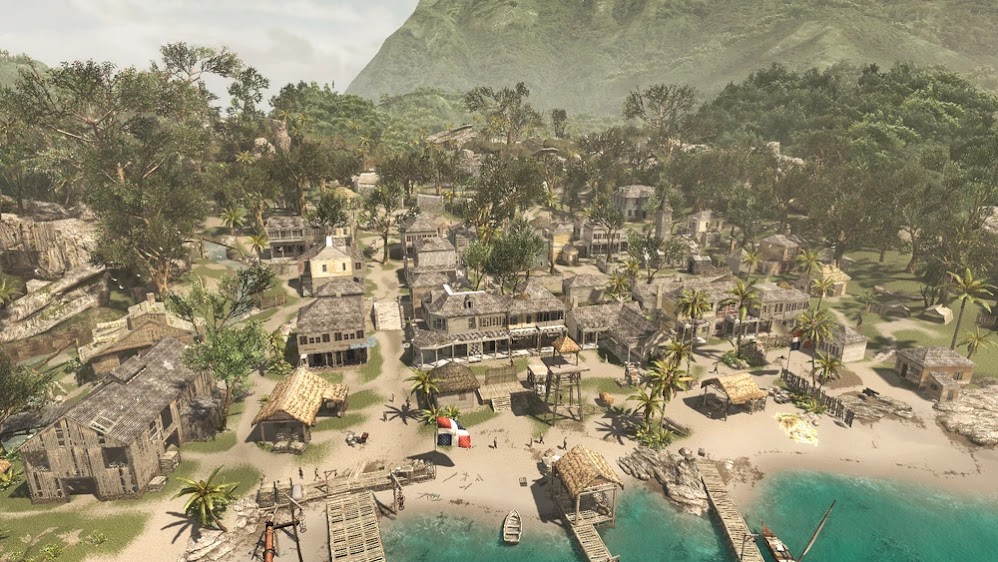Map of Saint-Domingue
Saint-Domingue on Wikipedia
To see some screenshots of Saint-Domingue and a colonial sugar plantation as digitally recreated
in the games, Assassin's Creed: Liberation and Freedom Cry, you can see them at the end of this page of the Parlor
Back to
Mayfairs of the Caribbean

The Mayfair Witches as Caribbean Planters
The history of this time period leading up to the Haitian Revolution is certainly a rich and detailed
history.
The Mayfairs would have lived on Saint-Domingue from the late 17th century through almost the entire 18th century. To explore
the Mayfairs in the era of Maye Faire, we have to take a closer look at various aspects. Slavery and the gens de couleur,
the rise of the plantation economy, the emergence of vodou, or voodoo, issues of class among natives and colonists...
The Mayfair Witches as plantation owners on Saint-Domingue during this period leading up to the Haitian Revolution is described
in the File on the Mayfair Witches. This file, compiled by the Talamasca over the course of more than 300 years, has recorded
that when Deborah Mayfair was being forced to tell authorities in France where her oldest child, daughter Charlotte, had gone
with her family, she told them Martinique.
However, when Petyr van Abel, shocked that the condemned witch in this little French village was Deborah, she told him the
truth. Charlotte had gone with her husband to Saint-Domingue, which is now part of modern day Haiti. Petyr van Abel, after
Deborah's death, went there to locate Charlotte, who was his daughter with Deborah Mayfair, to warn her about Lasher.
He was rather unpleasantly surprised to learn, as he had in Amsterdam with Deborah and all the clocks, that Charlotte had
already made Lasher's acquaintance. Charlotte turned out to be extremely clever, and, it turned out, married to a man who
could no longer father children. And, it was she who was the brains behind Maye Faire.
If you're somewhat familiar with plantations in the Old South, the southeastern United States, you're probably most familiar
with cotton plantations. Many, many plantations in the US South were indeed cotton plantations. Then, as you look at plantations
along the East Coast heading north towards places like Maryland, you find, in addition to cotton, tobacco plantations.
It seems, though, that as I looked at plantations closer and closer to the Gulf Coast, such as Louisiana plantations, I started
seeing more sugar plantations. Not all of the plantations in the region were sugar, but I did see more plantations with sugarcane
there than in other regions.
Some plantations seemed, at various points in their respective histories, to have grown different crops. For example, Belle
Grove Plantation in Iberville Parish, Louisiana grew both sugarcane and cotton. The Myrtles, perhaps Louisiana's most famous
plantation, grew both indigo and cotton.
So, what does that have to do with a plantation on Saint-Domingue? The majority of those plantations seems to have been sugar
and indigo plantations. Planters and their families who emigrated to what would later become the United States, especially
via Louisiana, would have had an advantage. They would have known how to establish an economy driven by cash crops. Those
cash crops were of the type planters knew how to grow. Or, I should say, how to instruct slaves to grow.
While the slave labor grew crops that made the planters rich, the planters used their wealth to build homes that reflected
wealth and status. It was as true on Saint-Domingue as it would be in Louisiana.
Back to
Mayfairs of the Caribbean

What Might Maye Faire Have Looked Like?
The question of what Maye Faire might have looked like is going to be a very interesting study.
As always, the best way to answer this question is to find images of real plantations in the region Maye Faire is set in.
Back to
Mayfairs of the Caribbean

Musée Ogier-Fombrun, Augier, Haiti
This museum was built on the site of a former sugar plantation in Augier, Haiti. The plantation
had been built by Guillaume Ogier, who was a French Colonist. In 1977, an architect named Gerard Fombrun found the ruins
of the sugar plantation, which had been abandoned by 1804, and decided to restore it. The result of that project is this
museum.
The museum has a website that gives more information on the history of the site, the plantation and the museum today. The
site seems to be down at the moment, so please keep checking back.
Back to
Mayfairs of the Caribbean

Although this plantation house is on the island of Jamaica, it is a well known plantation house
built in the same era as Maye Faire, the house of the so-called "white witch"...
Rose Hall, Montego Bay, Jamaica
Rose Hall was in an obvious state of ruin before its purchase and restoration in 1977
Rose Hall today
Back to
Mayfairs of the Caribbean

Gallery
WARNING: Some of the images are graphic
Back to
Mayfairs of the Caribbean

Links
Sugar plantations in the Caribbean-Wikipedia
Life on a Colonial Sugar Plantation-World History Encyclopedia

Click the Folder to Open the PDF Article
 A
Sugar Plantation on Saint-Domingue: White Attitudes Towards the Slave Trade
Back to
Mayfairs of the Caribbean

Some Historical Factoids
How can two places in America that seem so different from one another actually be connected somehow?
History.
Many of the French Creole planters who fled the Haitian Revolution managed to relocate to Louisiana. New Orleans was already
an established port by then. The Haitian Revolution ended in 1804, but it had something of a domino effect on the still newly
formed but still embattled United States. It led to the Louisiana Purchase.
Haiti's Rebellion by Enslaved People Led to the Louisiana Purchase
From the map above, from the Library of Congress, you can see that the Louisiana Purchase was
enormous. Tucked along the Gulf Coast, you can also see the area that was then called West Florida.
Part of this area would become part of the state of Louisiana.
To give you an idea of the areas that were part of the Louisiana Purchase, below is a current map of the United States from
World Atlas:
Because of the Louisiana Purchase, a more direct route on land could be made towards westward
expansion of the United States. As the Haitian Revolution drew to a close, the Louisiana Territory was purchased by this
young country that was about to become anything but a fledgling in size.
It was the Louisiana Purchase that made something else possible: the Oregon Trail. Hence the expedition of Lewis and Clark
to explore the region. On the face, it might seem like Louisiana and Oregon are so different from each other that it's hard
to imagine a link between their territorial histories. But it's there--a very strong link, in fact.
Origins of the Oregon Trail
Timeline of The Oregon Trail
Did you know that for a long time, there waa a lot of uncertainty as to the origin of the name,
"Oregon"? Many believed it came from a Native American word that was how the tribes described the Columbia River: hurricane!
Others thought it came from a Native American word that described a species of fish found in the Oregon Territory. Still,
others believed it might actually be a French word or derived from a French word (Grand Teton certainly was!).
The most likely answer to the question is that "Oregon" is a Spanish word! I know. What.
If you look at the map of the territories from the Library of Congress above, you will see that a very significant portion
of what is now the United States was in the possession and control of Spain, then Mexico. In recent years, I've read more
about this vast area once called "New Spain". It seems that the northernmost border of New Spain was just below what is now
the southern border of the state of Oregon.
There is another interesting aspect to this story. It is an ongoing debate among historians as to whether or not Sir Francis
Drake, during an expedition in 1579, dropped anchor along the coast of what is now Northern California, or what is now the
coast of Oregon (state). Quite possibly, England was able to claim this territory called Oregon before Spain had a chance
to claim it and expand New Spain further north. This dispute might have been a major factor in what would lead to an historic
Naval battle between England and Spain: the Spanish Armada in 1588.
What did Sir Francis Drake discover?
Sir Francis Drake was the second in command to Lord Howard of Effingham of the English fleet during
that battle. His ship during the battle, the Revenge, was not the same ship he'd been in command of when he dropped
anchor along the coast of what could very well have become the state of Oregon. That ship was The Golden Hinde. A
replica of the ship paid a visit to the Port of Coos Bay in the summer of 1987, and I was fortunate enough to have gotten
a chance to see it decades before I had any idea why its visit was so important.
There is a great deal more to all of this history by far. Like all that we now know about our genetics and genealogy, we
gain a much better understanding of how historical events, places and people can influence the things that happen generations
or even centuries later.
Back to
Mayfairs of the Caribbean

Saint-Domingue Special: Assassin's Creed
A small gallery of screenshots from Assassin's Creed Liberation and Freedom Cry showing a digitally
recreated sugar plantation on Saint-Domingue. The game is a series that sets the game play within actual historical places
and alongside historical figures.
Ubisoft developed the scenes of the game from historical research so the scenes would be as accurate as possible. Liberation
and Freedom Cry appear to be set around events leading up to the Haitian Revolution on Saint-Domingue. The game also includes
settings in 18th century New Orleans. This might actually represent what Maye Faire might have looked like.
I plan to add more images and information about the Assassin's Creed game, so please keep checking back!

Aveline Character, Assassin's Creed
The Art of Assassin's Creed: Liberation and Freedom Cry
1 / 6

2 / 6

3 / 6

4 / 6

5 / 6

6 / 6

Back to
Mayfairs of the Caribbean


|

